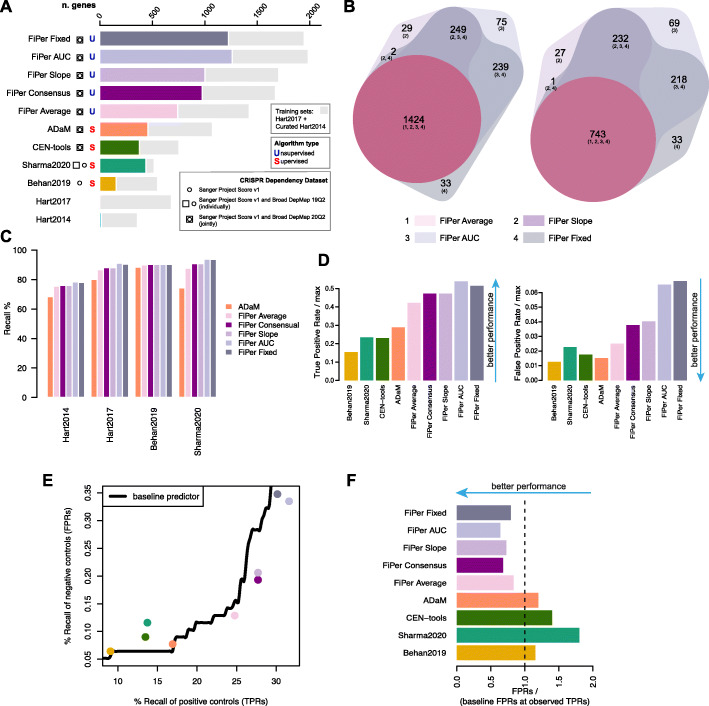Fig. 2.
Comparison of CoRe output with state-of-the-art sets and methods. A. For each method predicting core-fitness essential genes (CFGs), common-essential genes (CEGs), or state-of-the-art (SOA) sets of CFGs, the overall length of the bar indicates the total number of genes, whereas the length of the coloured bar indicates the total number of predicted genes not included in any of the training sets. Squares/circles indicate the dataset analysed by each method or used to derive the considered SOA set, and letters indicate the nature of the method, i.e. (S)upervised or (U)nsupervised. B. Comparison of common-essential gene sets predicted by the four variants of the FiPer method (left) and considering novel hits only, i.e., excluding any gene belonging to any of the training sets (right). C. Recall of SOA sets of CFGs genes across CoRe methods’ predictions. D. True and False positive rates (TPRs/FPRs) of independent true/negative controls across SOA sets of CFGs, CoRe and other methods, relative to the maximal TPRs/FPRs attainable by the basal daisy model (DM) predictor of CFGs. E. Performance assessment accounting for set sizes. Each point corresponds to a different method or SOA set, with coordinates indicating their TPR/FPR, respectively along x- and y-axis. Black curve indicates the FPRs obtained by a baseline DM predictor at given TPRs. F. FPRs of all tested methods and SOA sets of CFGs relative to baseline performances. The length of each bar indicates the ratio between the FPR of the method or set under consideration and that of the baseline DM classifier at a TPR equal to that observed for the method or set under consideration

